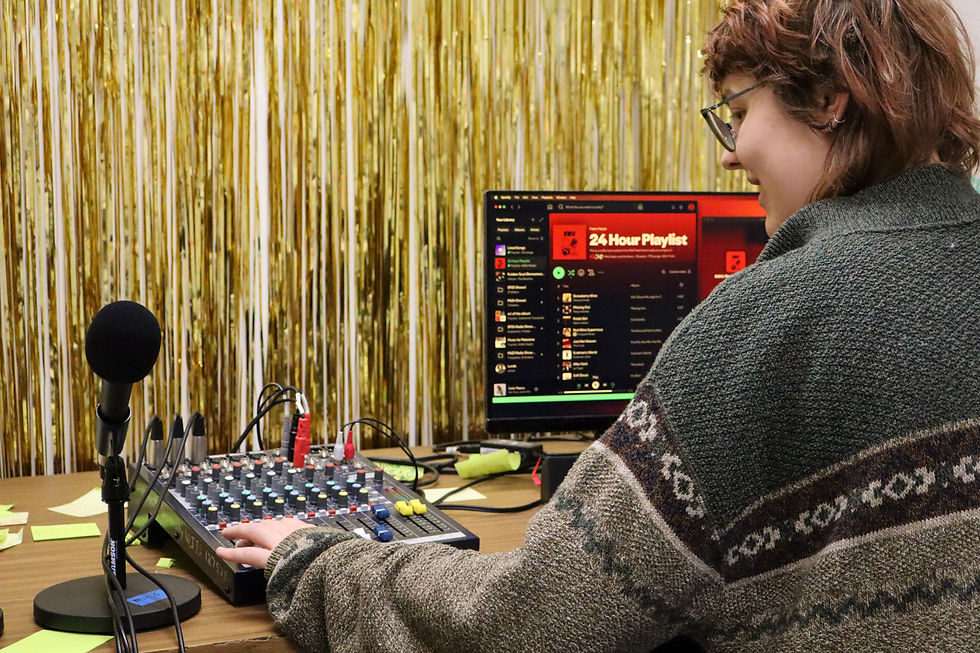Students discuss impact of protests, University offers safety advice
- Collegian staff
- Oct 1, 2021
- 4 min read
Updated: Oct 1, 2021
Melissa Baskin
Staff Writer
Though we are only a month into the school year, protests are in full swing across the street at the Capitol. Groups such as the Proud Boys tend to make a regular appearance to share their viewpoints. Though this is their constitutional right, some Willamette students and staff have expressed safety concerns. It is important to note that not all protests are by far-right groups, but the ones most noticed by students tend to be the far-right or right-leaning ones. To get an idea of student perspectives on nearby protests, the Collegian conducted a survey with a response rate of 55 individuals across all four grade years, as well as some faculty/staff. Additionally, director of Campus Safety Ross Stout was interviewed.

Respondents were first asked if they felt unsafe while walking around campus during protests, then if they felt unsafe while walking around Salem itself. Additionally, they were given a chance to elaborate on their thoughts shortly after. Most individuals cited no immediate fear of being on campus during protests, though many expressed a palpable “air of uncertainty and anxiety” surrounding Willamette during said events. However, 44/55 respondents professed a fear for their safety while walking downtown. Common consensus seems to be to stay away from the Capitol, as well as nearby areas.
Six Black, Indigenous, or People of Color (otherwise shortened to BIPOC) expressed a heightened sense of fear because of their marginalized status. One student in particular wrote, "BIPOC students can't even leave their rooms just to eat or go to class when these protests happen. The whole town becomes unsafe for people like us." Another student brought up women’s issues as an extra stressor during these times. They said: "Me and my friends tend to be cautious, avoiding the northern parts of campus. More specifically, my girl friends get noticeably uneasy, as the protestors have a reputation of harassing + stalking women."
The distance between the Capitol and campus is 0.1 miles (right across the street), which means that occasionally students and protesters mix and overlap. Though this is not always a problem (for example, the Capitol’s proximity to campus means that students get increased access to internships, and some students take the opportunity to protest their own politics) some protestors do take their beliefs to the extreme by harassing students. Two respondents felt that there are not many, if any at all, protocols within Campus Safety that would safeguard their well-being if protestors decided to engage with them. One wrote, “The lack of civility by right wing protestors is a danger to campus. Campus Safety needs to have a large, visible presence during these events. The Salem PD won't do anything on their own but will respond if Campus Safety reports trespassing.”
When asked what Campus Safety’s general protocol for protests is, Ross Stout (director) said that in the case of known protests (i.e. if the protests are planned and advertised, or leak via social media), “we bring in extra contract security just to monitor the north end of campus, because some of these groups are known to carry weapons.” They also, “work pretty closely with the state police, and there’s a unit of the state police that’s assigned to the capitol.” These two groups tend to, “alert us if something escalates beyond what they expect,” Stout said. Finally, he mentioned that since Campus Safety typically only has two staff on duty at any given time, “we generally have enough staff that can respond to ‘oh, this situation is a homeless person, or there’s someone going through the dumpster,’ but we just don’t have staff to see all of that [protests] happening.” So Campus Safety, “relies on the community to be [their] eyes and ears. If you do see behavior could be potentially dangerous or problematic to the community, call us,” he requested.
If protests start to disperse onto campus, Stout said that their response would differ depending on the number of people involved. “If it’s one or two people, we’re going to talk to those one or two people and remind them, ‘this is private property, and we want you to stay on the public street.’ If it becomes a lot, then we would use our emergency notification system and let everyone know to stay inside and avoid going out, and call 911 for assistance as well.”
Stout said that if a student gets assaulted or otherwise violently harmed, “we would immediately assist in any way we could, but we would also call 911, as well as any campus resources that are needed like counseling to help.” But he also said that there haven’t been any violent encounters on campus. He did note that, "in the spring of 2020, there was a student that got chased by a protester to the front door of Baxter...this was an intimidation response, which was intimidating for sure, but no one was hurt." That was all he could recall—though it is worth mentioning the Asian student who was assaulted near campus just last year in a racially-motivated hate crime.
When asked for safety advice during protests, Stout said: "we encourage students to avoid situations that could likely be unsafe.” As always, Campus Safety “provides escorts, whether it’s dark or not” if a student feels unsafe walking around campus.







![[Updated] ASWU senate votes unanimously against the affiliation of Turning Point USA chapter](https://static.wixstatic.com/media/4799e7_14c1f1c2ae4c4b0e9cefcbe8579556c3~mv2.jpg/v1/fill/w_980,h_653,al_c,q_85,usm_0.66_1.00_0.01,enc_avif,quality_auto/4799e7_14c1f1c2ae4c4b0e9cefcbe8579556c3~mv2.jpg)
Comments